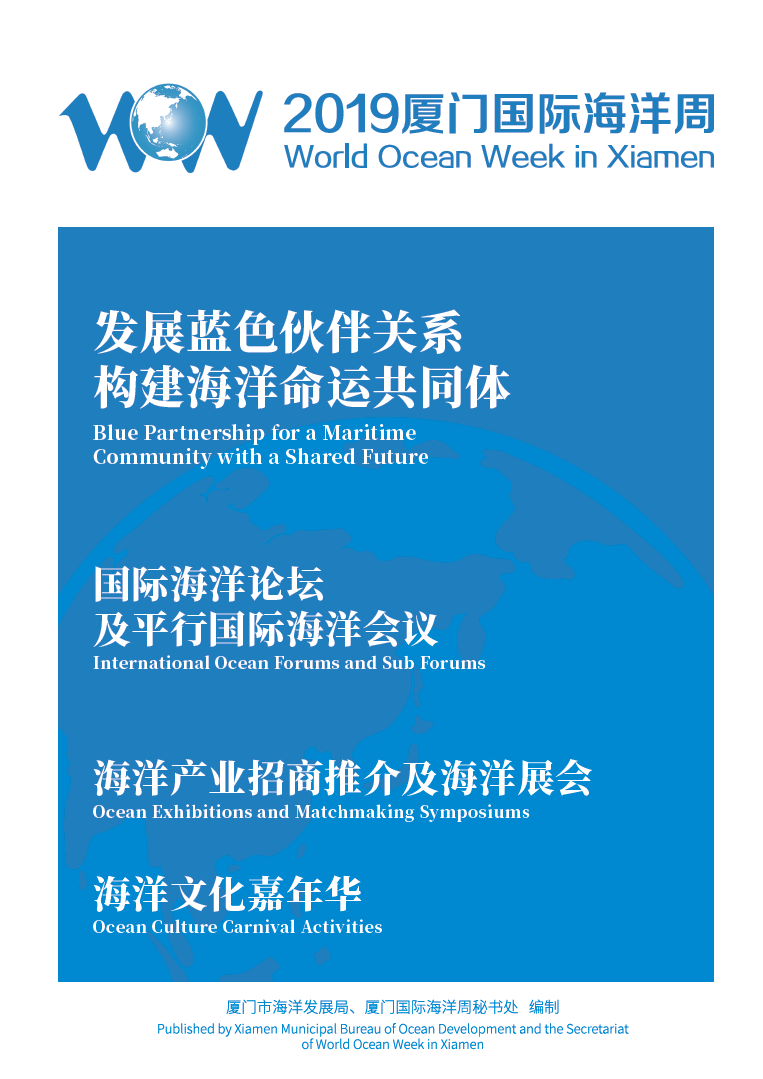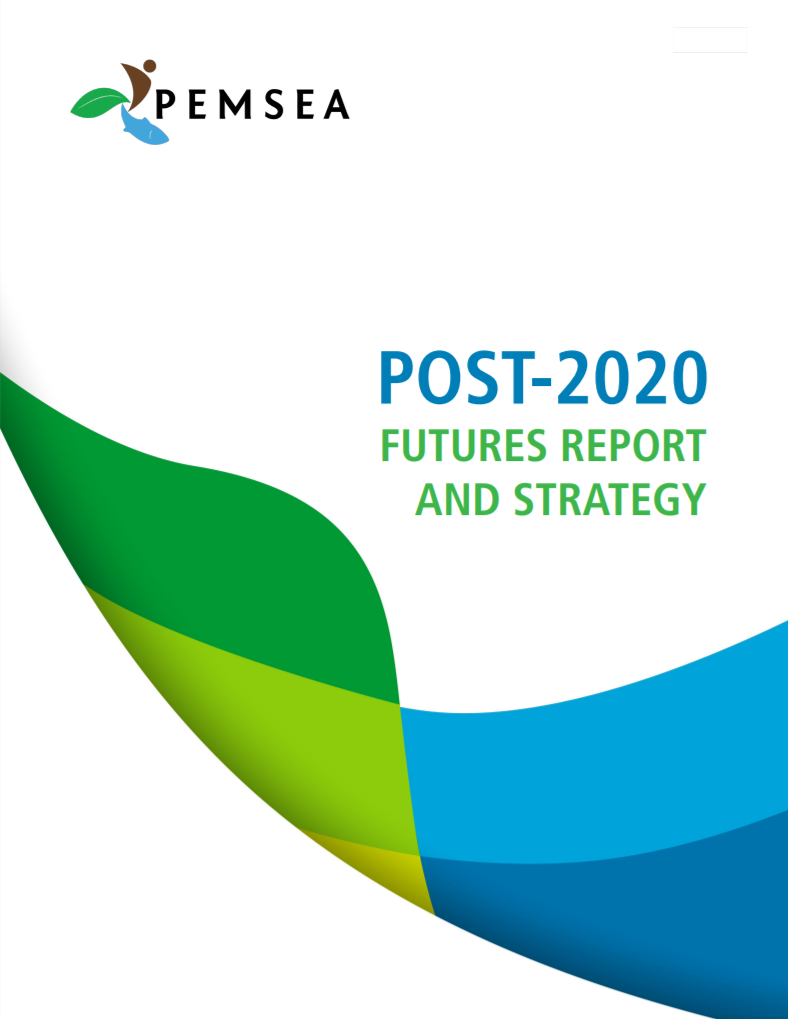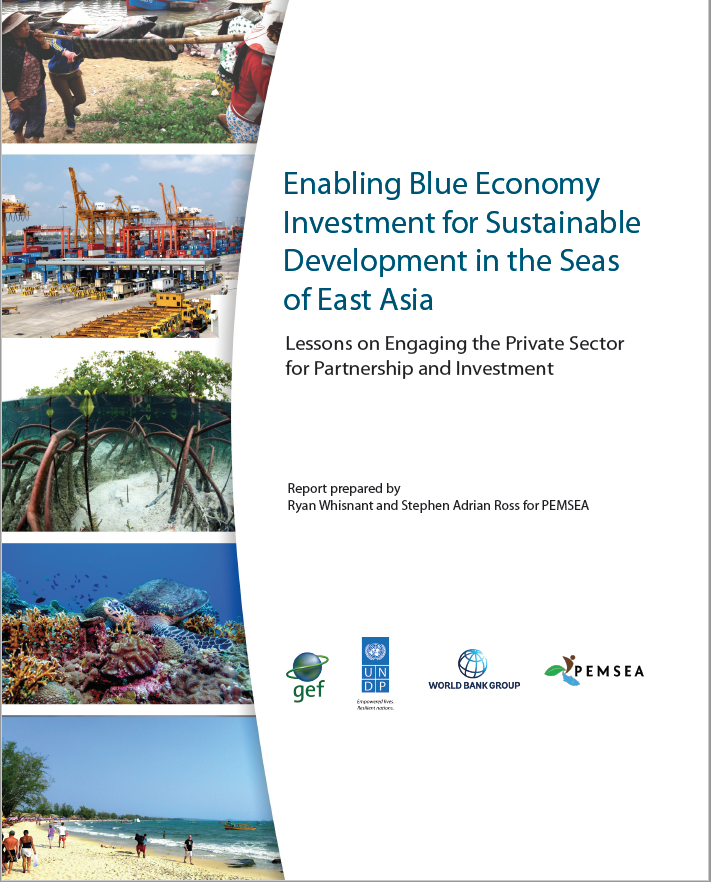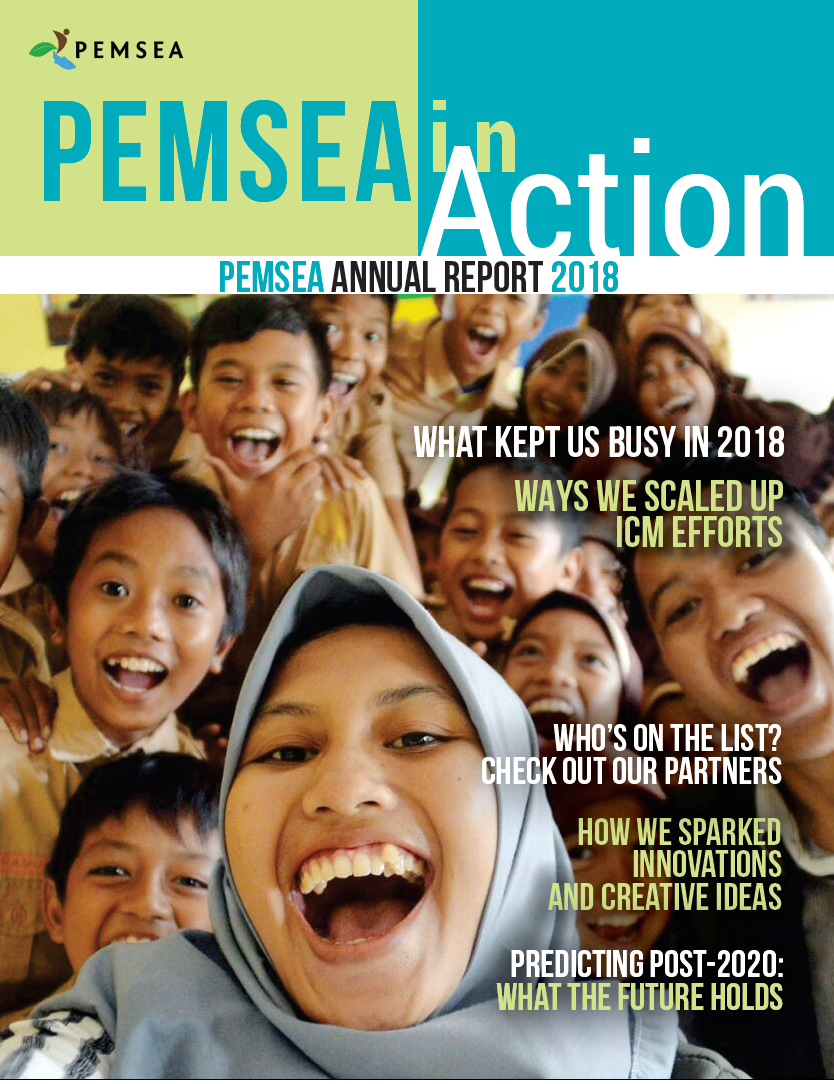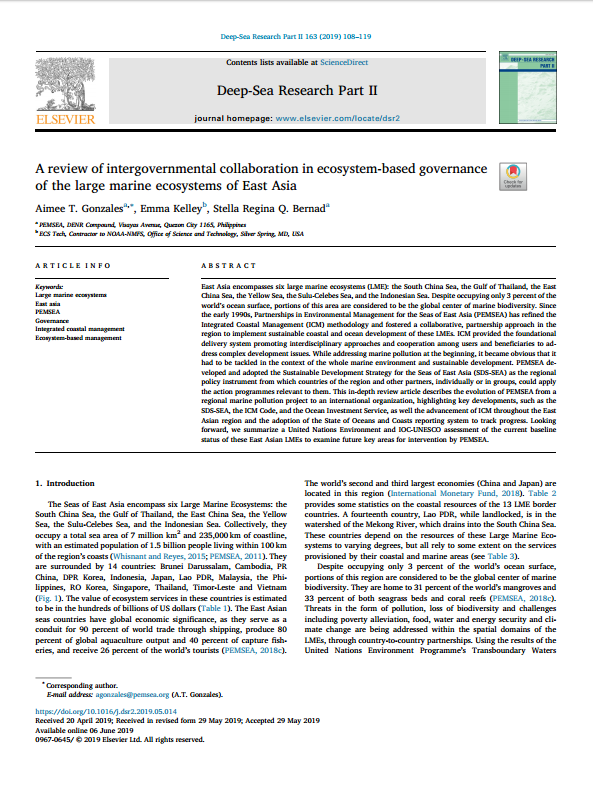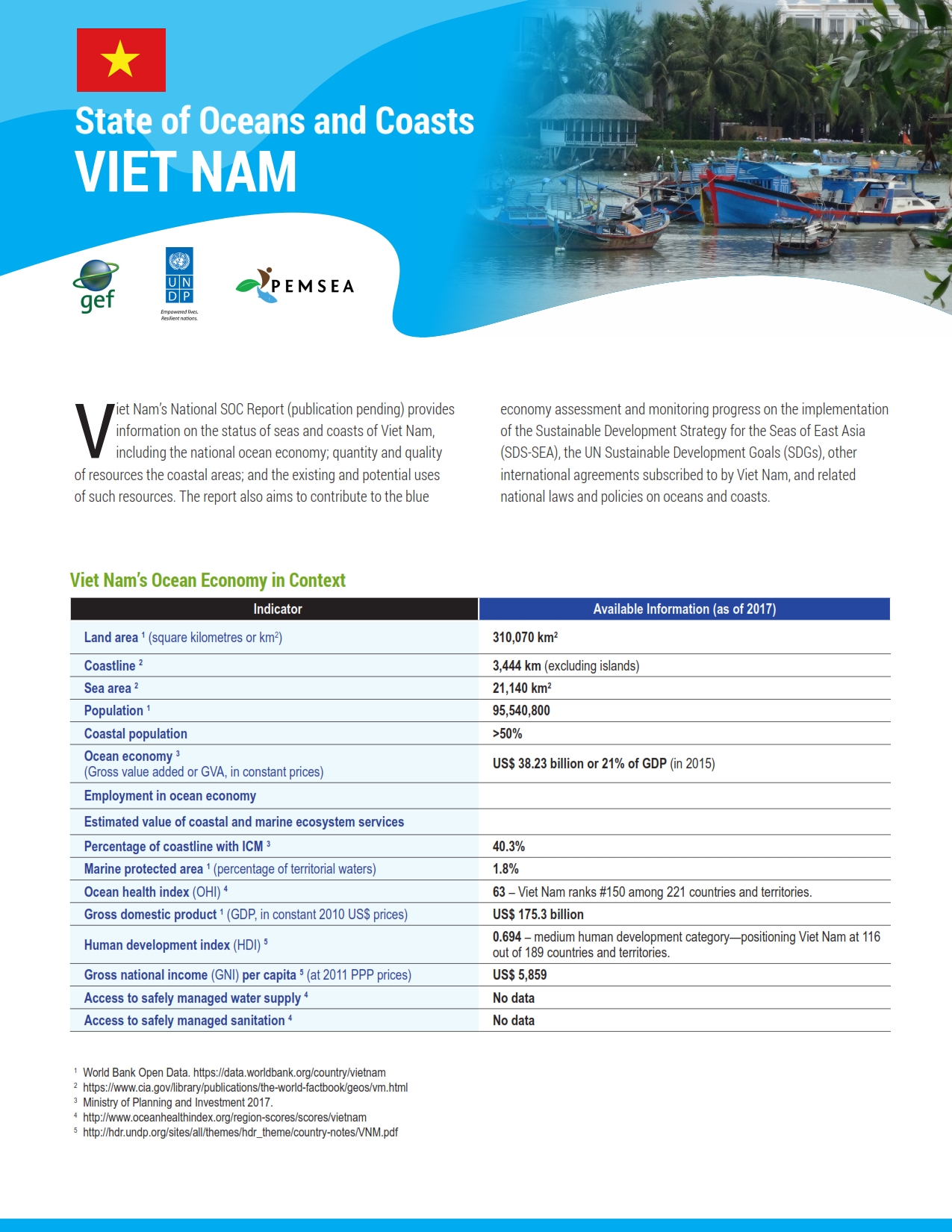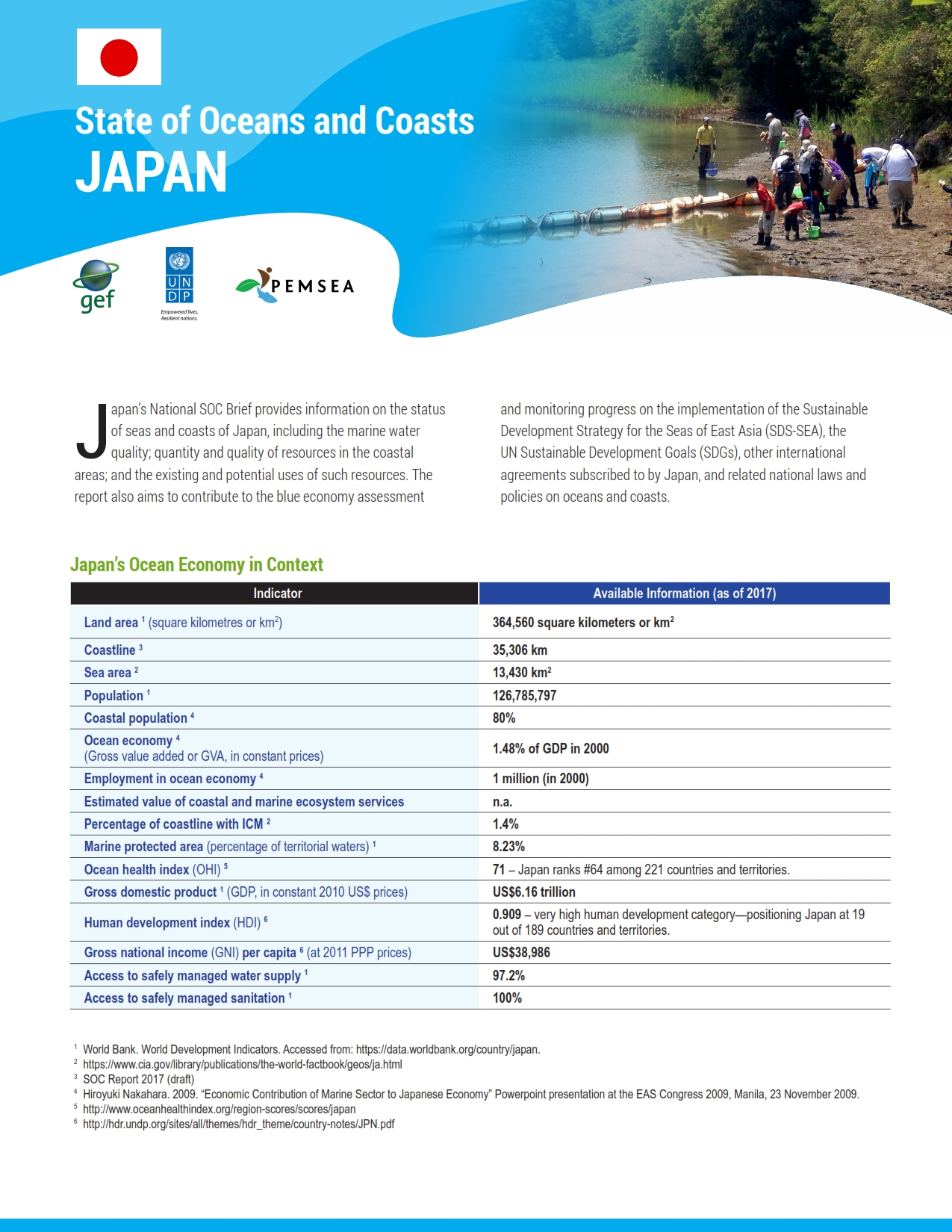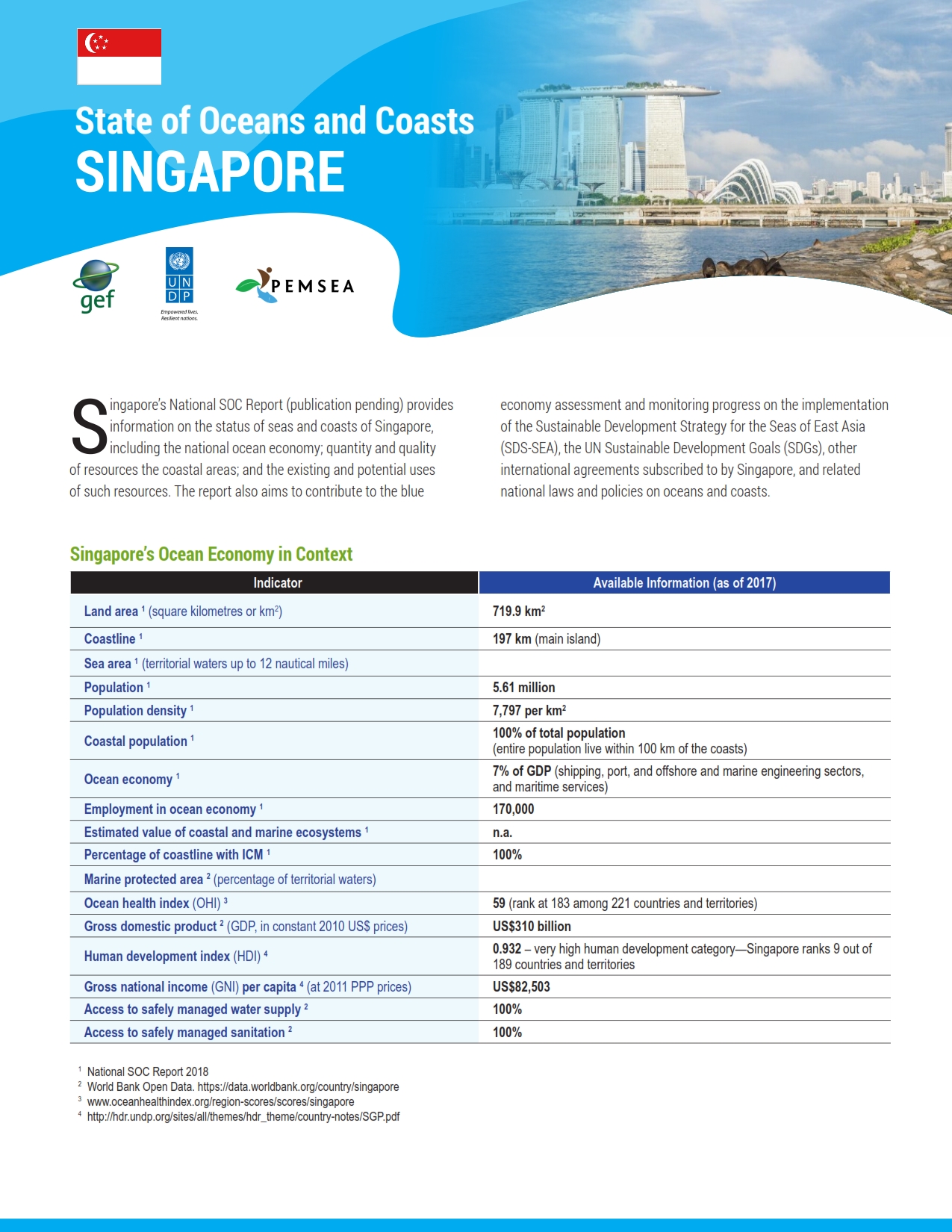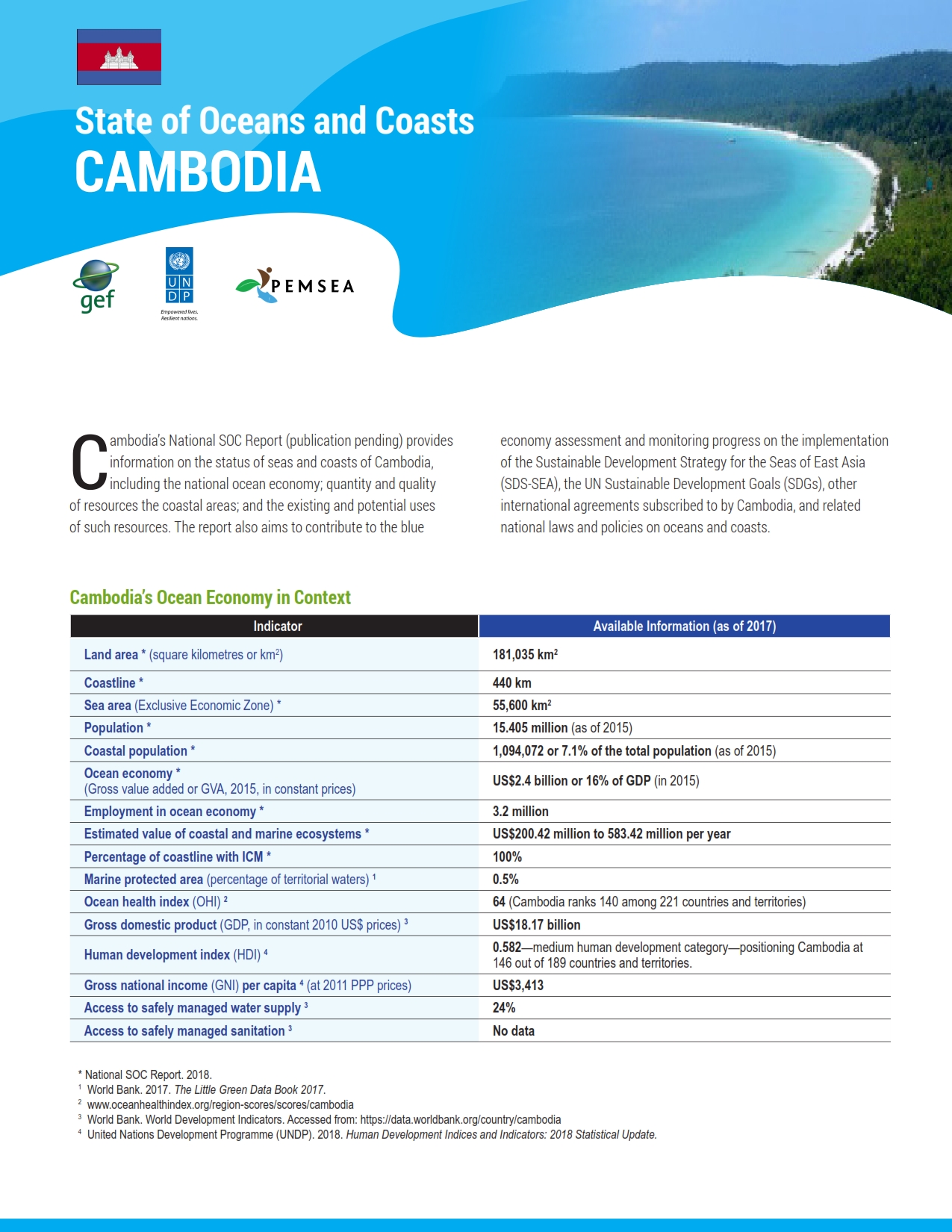
Breadcrumb
Proceedings of Xiamen World Ocean Week 2019
With the theme of "Blue Partnership for a Maritime Community with a Shared Future", this year's World Ocean Week launched a new marine activities model which combined the exhibition, forum, investment promotion, science popularization, and tourism. It focused on marine industry docking and international communication, which deepens marine communication and cooperation between China and BRI countries, including ASEAN members.
Post-2020 Futures Report and Strategy
The East Asian Seas cover approximately 7 million km2 of sea area and 235,000 km of coastline. It is recognized as the center of marine biodiversity globally, being home to 31% of the world’s mangroves, 33% of seagrass beds and a third of the world’s coral reefs. Countries in the East Asian region account for 80% of global aquaculture, and around 60% of the world’s capture fisheries. The region’s seas serve as an important conduit for world trade, connecting 9 of the world’s 10 busiest ports. Moreover, the region is a center of economic growth, home to the 2nd and 3rd largest economies of the world (China and Japan, respectively), and the combined economies of ASEAN, which represent the world’s 5th largest economy and the 3rd largest global market with more than 630 million people.
Partnerships in Environmental Management for the Seas of East Asia (PEMSEA) is a regional organization mandated to promote collaboration towards healthy oceans, people and economies in the East Asian Seas (EAS). Eleven country partners and 21 non-country partners have been working together to implement a shared regional strategy called the Sustainable Development Strategy for the Seas of East Asia (SDS-SEA), which outlines ambitious targets and approaches towards ensuring sustainable and prosperous oceans and coasts in the region.
The adoption of the United Nations Sustainable Development Goals (UN-SDGs) in 2015 called on the public and private sectors and civil society to focus their efforts and partnership towards addressing the interrelated challenges of sustainable development, with the view of scaling-up solutions and managing resources more effectively. The same is taking place in East Asia as policies, programs, and projects are being aligned in support of the SDGs across the domains of government, business and finance, civil society, development funding and philanthropy.
As PEMSEA celebrates 25 years of helping strengthen regional governance and cooperation, building local capacity and implementing integrated coastal management (ICM), it now looks to the future. Stepping into a post-2020 world, this report seeks to identify the relevant global, regional and national trends that will catalyze change and influence decision-making for the EAS. In this report, key facts and figures on persistent and emerging trends and priority developments present both familiar and new perspectives on the challenges and opportunities that are likely to matter post-2020. This report is part of the process of stocktaking with a view to developing an action plan (roadmap) that would cover both mid- and long-term programs of work. The report’s aim is to help inform PEMSEA’s effective and collaborative engagement towards more sustainable and prosperous oceans and coasts.
Enabling Blue Economy Investment for Sustainable Development in the Seas of East Asia
In collaboration with other regional and international organizations, PEMSEA has undertaken a significant body of work to advance both the understanding and practice around blue economy and investment in sustainable development of coasts and oceans. This report provides an update on the current state of blue economy investment in East Asia, with lessons learned and recommendations for international development organizations to help advance blue economy investment.
PEMSEA Annual Report 2018: PEMSEA in Action
This annual report shares PEMSEA's significant milestones in 2018: PEMSEA’s 25th anniversary; the holding of the East Asian Seas Congress in the Philippines; and country partners commitment to intensify the implementation of our shared regional strategy, the Sustainable Development Strategy for the Seas of East Asia, and pledge to support the sustainability of the PEMSEA Resource Facility beyond 2019 through the Iloilo Ministerial Declaration.
A review of intergovernmental collaboration in ecosystem-based governance of the large marine ecosystems of East Asia
East Asia encompasses six large marine ecosystems (LME): the South China Sea, the Gulf of Thailand, the East China Sea, the Yellow Sea, the Sulu-Celebes Sea, and the Indonesian Sea. Despite occupying only 3 percent of the world’s ocean surface, portions of this area are considered to be the global center of marine biodiversity. Since the early 1990s, Partnerships in Environmental Management for the Seas of East Asia (PEMSEA) has refined the Integrated Coastal Management (ICM) methodology and fostered a collaborative, partnership approach in the region to implement sustainable coastal and ocean development of these LMEs. ICM provided the foundational delivery system promoting interdisciplinary approaches and cooperation among users and beneficiaries to address complex development issues. While addressing marine pollution at the beginning, it became obvious that it had to be tackled in the context of the whole marine environment and sustainable development. PEMSEA developed and adopted the Sustainable Development Strategy for the Seas of East Asia (SDS-SEA) as the regional policy instrument from which countries of the region and other partners, individually or in groups, could apply the action programmes relevant to them. This in-depth review article describes the evolution of PEMSEA from a regional marine pollution project to an international organization, highlighting key developments, such as the SDS-SEA, the ICM Code, and the Ocean Investment Service, as well the advancement of ICM throughout the East Asian region and the adoption of the State of Oceans and Coasts reporting system to track progress. Looking forward, we summarize a United Nations Environment and IOC-UNESCO assessment of the current baseline status of these East Asian LMEs to examine future key areas for intervention by PEMSEA.
State of Oceans and Coasts of Viet Nam
Viet Nam’s National SOC Report provides information on the status of seas and coasts of Viet Nam, including the national ocean economy; quantity and quality of resources the coastal areas; and the existing and potential uses of such resources. The report also aims to contribute to the blue economy assessment and monitoring progress on the implementation of the Sustainable Development Strategy for the Seas of East Asia (SDS-SEA), the UN Sustainable Development Goals (SDGs), other international agreements subscribed to by Viet Nam, and related national laws and policies on oceans and coasts.
State of Oceans and Coasts of Japan
Japan’s National SOC Brief provides information on the status of seas and coasts of Japan, including the marine water quality; quantity and quality of resources in the coastal areas; and the existing and potential uses of such resources. The report also aims to contribute to the blue economy assessment and monitoring progress on the implementation of the Sustainable Development Strategy for the Seas of East Asia (SDS-SEA), the UN Sustainable Development Goals (SDGs), other international agreements subscribed to by Japan, and related national laws and policies on oceans and coasts.
State of Oceans and Coasts of Singapore
Singapore’s National SOC Report provides information on the status of seas and coasts of Singapore, including the national ocean economy; quantity and quality of resources the coastal areas; and the existing and potential uses of such resources. The report also aims to contribute to the blue economy assessment and monitoring progress on the implementation of the Sustainable Development Strategy for the Seas of East Asia (SDS-SEA), the UN Sustainable Development Goals (SDGs), other international agreements subscribed to by Singapore, and related national laws and policies on oceans and coasts.
State of Oceans and Coasts of Cambodia
Cambodia’s National SOC Report provides information on the status of seas and coasts of Cambodia, including the national ocean economy; quantity and quality of resources the coastal areas; and the existing and potential uses of such resources. The report also aims to contribute to the blue economy assessment and monitoring progress on the implementation of the Sustainable Development Strategy for the Seas of East Asia (SDS-SEA), the UN Sustainable Development Goals (SDGs), other international agreements subscribed to by Cambodia, and related national laws and policies on oceans and coasts.
